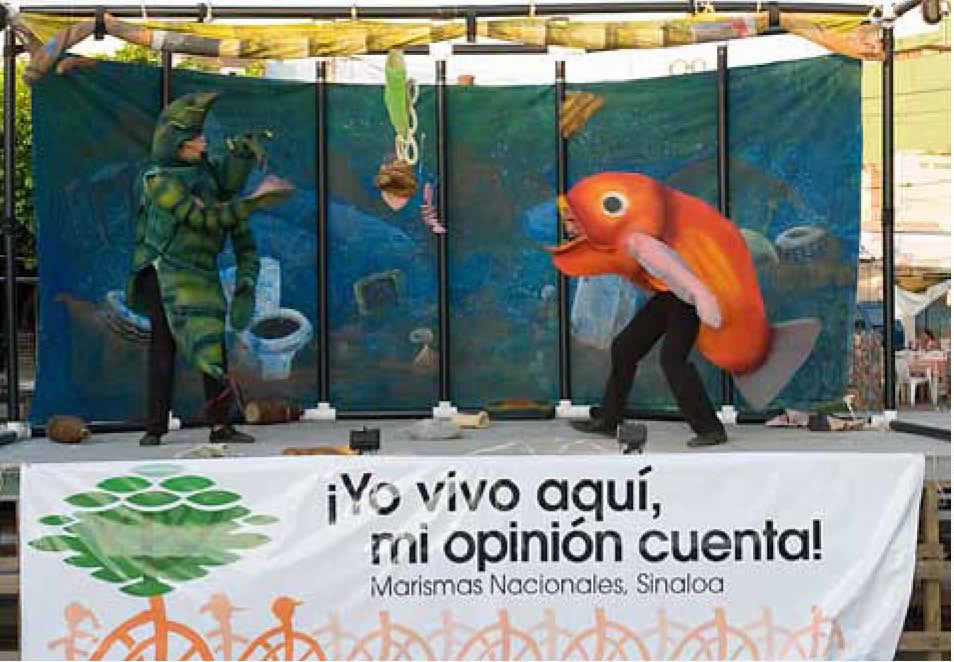 The performance piece “Last of the Ceviche” tackled the social and environmental issues associated with coastal real estate development.
The performance piece “Last of the Ceviche” tackled the social and environmental issues associated with coastal real estate development. (Photos: Ernesto Bolado Martínez)
The Fund for the Promotion of Tourism (Fonatur), author of the Pacific Coast Integrally Planned Center (CIP) and other megaprojects such as those in Cancun, Los Cabos, Ixtapa and Huatulco, planted its flag in the face of opposition from the town of Escuinapa, named in official documents as the project’s so-called "support town”.
A red tower in the shape of the Fonatur logo was placed on top of an important sand bar harboring a valuable subterranean aquifer. Right next to this is a road with sidewalks and a wall made from piles of rock encased in wire that was built to prevent entrance to what was the Las Cabras public beach. As the signs say, the site is located on the federal highway's "scenic route" between Escuinapa and Teacapán, Sinaloa.
Martha Armenta, president of Conrehabit A.C. (Conservation and Rehabilitation of Wildlife and Its Habitat) christened it the "Bimbuñeulo" in reference to the similarity between the Fonatur logo and a cookie of that same name made by a national bakery.
Another of the residents, resentment apparent in his voice, commented: "it seems like they are coming to colonize us."
Now, instead of the tents commonly seen in the area during the vacation season, Fonatur is projecting 43,981 rooms, two golf courses, a 400-berth marina, a tourist boardwalk, a walking path along the marshland lakes, and avenues for commercial and entertainment businesses as well as other services.
President Felipe Calderón came to inaugurate the Pacific Coast CIP in February 2009, pointing to it as one of the most ambitious projects of the current federal government, covering 5,884 acres, twice the size of the Cancun CIP.
"This will be a center of tourism development, I think the most important to be built in Mexico in decades," he added. He emphasized that the goal is "to take advantage of the wonders that are here, to develop the economy of the 21st century, an economy which is based on the provision of services."
Though Calderón did not see them, these project sites were visited by the NGOs Conselva, Redes, SuMar, Alcosta and Greenpeace Mexico, among others.
Alcosta (Alliance for Sustainability of the Coastal Northwest) is comprised of 22 of the most active conservation organizations from the five Mexican states that border the Gulf of California. Alcosta has been working on tourism and other issues since 2000 and played a critical role in the resizing of Fonatur's megaproject initially known as the "Nautical Ladder" and later renamed the "Sea of Cortez Project."
Faced with a lack of transparency in the planning and operation of the Escuinapa CIP, the members of these NGOs mounted a campaign to educate and invite public participation in defense of the common good and the area’s emblematic marshes.
 The performance piece “Last of the Ceviche” tackled the social and environmental issues associated with coastal real estate development.
The performance piece “Last of the Ceviche” tackled the social and environmental issues associated with coastal real estate development. 